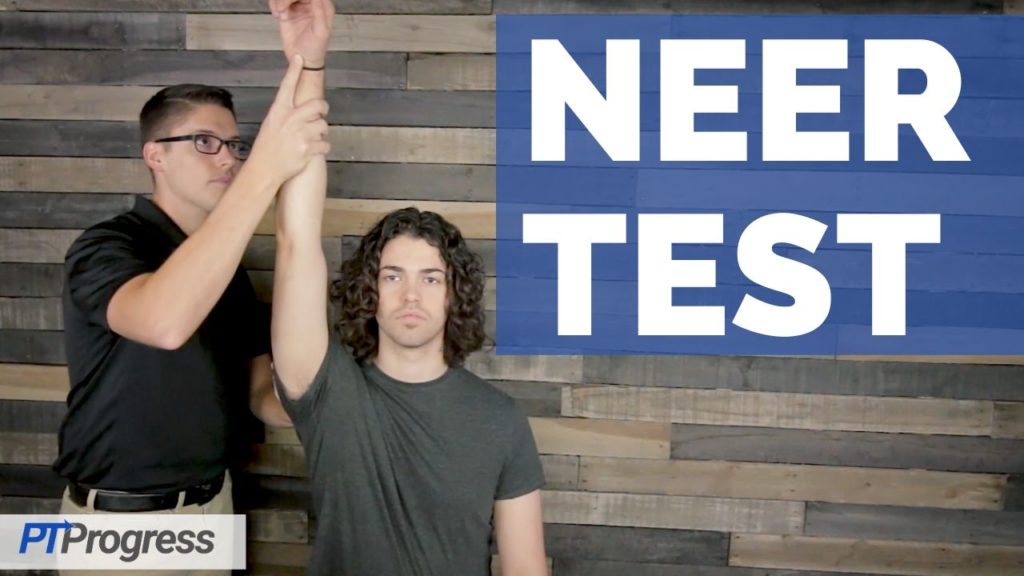
The Neer test is used to identify symptoms of rotator cuff impingement, specifically supraspinatus or biceps brachial impingement. This test is often performed along with the Hawkin’s Kennedy test and Jobe’s test when impingement is suspected.
How to Perform Neer Test
Position of Patient: Patient is sitting or standing with arm relaxed at side.
Performance: The examiner will stabilize the scapula with a downward force while passively flexing the patient’s internally rotated humerus into full elevation.
How to Interpret Neer Test
Positive Finding: The test is considered positive if the patient experiences pain with maneuver. A positive test may support pathology of the supraspinatus and even the long head of the biceps brachial tendon.
Test Accuracy / Reliability / Evidence:
Sensitivity and Specificity
Sensitivity = 0.78
Specificity = 0.58
+LR = 1.9
– LR = 0.38
Source: Alqunaee M, Galvin R, and Fahey T: Diagnostic accuracy of clinical tests for subacromial impingement syndrome: a systematic review and meta-analysis. Arch Phys Med Rehabil 2012; 93: pp. 229-236
The Neer test is used to identify symptoms of rotator cuff impingement, specifically supraspinatus or biceps brachial impingement.
To perform the Neer test position the patient in sitting or standing with arm relaxed at side. The examiner will stabilize the scapula with a downward force while passively flexing the patient’s internally rotated humerus into full elevation. The test is considered positive if the patient experiences pain with this maneuver.

